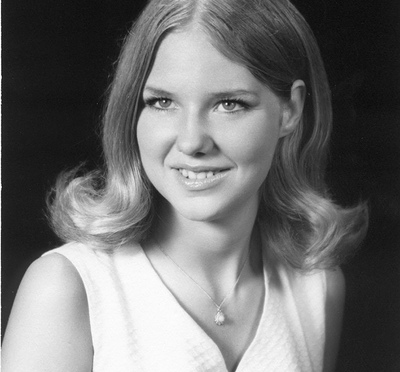My 21st entry in Amy Johnson Crow’s “52 Ancestors in 52 Weeks family history blogging challenge.
The challenge: have one blog post each week devoted to a specific ancestor. It could be a story, a biography, a photograph, an outline of a research problem — anything that focuses on one ancestor
I’m closing the gap at just 2 weeks behind in this series (the challenge is on week 23). I initially blamed my tardiness on being super busy at home, work, and with my volunteer work. However, the extended lapse can be blamed on the recent diagnosis of some critical health issues that had wiped me out for a while (you can read about that on my food blog). But I’m determined to chronicle at least 52 Ancestors this year, so I’m playing catch-up.
My 21st “ancestor” is really a few stories about homes, but since I am supposed to tie these to actual ancestors or relatives, I have picked Youngest Aunt FLANAGAN as that relative, since she is the one who first told me these stories, and since I have already written about both grandparents in my 52Ancestors project.
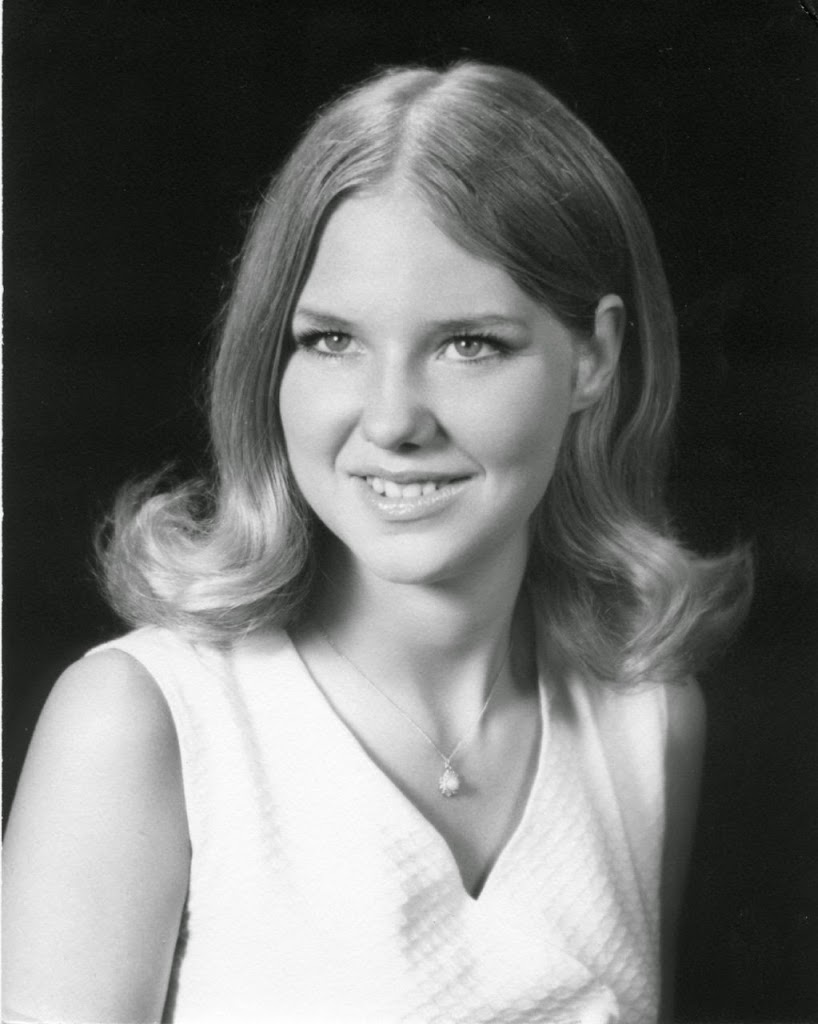
I have mentioned before how poor my mom’s family was growing up, but the kids didn’t know that until they were older. Because my grandparents, Michael John FLANAGAN (1927-1997) and Elsie Charlotte HAYES (1926-1992), made the best of every situation, turned hardships into fun and games when possible, played with the kids, and showered the kids with affection.
Two stories told to me when I interviewed their youngest daughter years ago (I am referring to her as “Youngest Aunt Flanagan” here, instead of giving her name, to protect her privacy since she is still living) have always stood out in my mind as illustrating how very poor they were as a young family. Yet Youngest Aunt Flanagan recalled these stories as fun adventures, happy times. I have since chatted with Mom a couple of times — she is older than Youngest Aunt Flanagan — for clarification.
Michigan Back To California
Mike and Elsie moved back to Michigan, to be near Elsie’s family, after Mike was discharged from the Navy in March 1948. Their second, third, and fourth children were born in Michigan.
Sometime after 1952, Mike and Elsie moved their family back to California. Their oldest child had a severe case of asthma, and doctors told Mike and Elsie that the child might not live unless they moved her to a warmer dryer climate.
Grandma And Grandpa Leroy
With no job or home lined up, and almost no money, Mike and Elsie returned to their last place of residence when Mike served in the Navy — San Diego.
The cross country journey by car, loaded up with four kids and all of their belongings, had used up the last of their money. Mike and Elsie didn’t know what to do. They relied, literally, on faith, and parked in front of a church while they discussed their options. Can you imagine how terrified they must have been, wondering how they would provide shelter and food for their young children?
While sitting in front of the church, a couple from the church (or one member of this couple, here the details from the kids get foggy) that the kids nicknamed Grandpa and Grandma Leroy (an African-American couple) came out to check on this obviously destitute family. When they learned of their predicament, Grandpa and Grandpa Leroy offered to let the family camp in a tent in their backyard. They apparently didn’t have room inside their own home for a family of six. This backyard tent was the Flanagan family’s first California home after returning from Michigan.
6/20/14 Update: After Mom read this post, she messaged me more info. “We were parked in front of a church and Daddy was slumped over the steering wheel crying, that is why the Leroys asked what was wrong. I do remember [older sister, name omitted for privacy] and I had our 4th and 5th birthdays in their backyard. I still remember what Dad and Mom gave us. Fake pearl bracelets. I don’t remember, but I think [older sister] started school there.
Me: Bet you girls loved those bracelets.
Mom: We sure did. We always thought they were pearls. That was my best birthday as a child. My best Christmas is what Grandma said was the cheapest Christmas. It was the year we got junk. I got a tool to put rhinestones on to things, and my weaving loom.”
Grandpa Leroy helped my grandfather find work as a garbage collector. Mom told me several times when I was younger than Grandpa had a big soft spot in his heart for African Americans because of this act of kindness.
Tin Can Alley
I am uncertain of how long Mike and Elsie lived in San Diego, but the family’s next home was in Fullerton, Orange County, California — in what Youngest Aunt Flanagan calls “Tin Can Alley”. When I asked Mom about this after my interview with Youngest Aunt Flanagan, Mom explained that they lived in an old World War II Quonset hut.
Mom doesn’t know how they ended up here. Were abandoned Quonset huts being marketed as homes? Did Grandpa have a connection that knew housing could be found in abandoned Quonset huts? Why Fullerton? Where in Fullerton (I live one city over!)? Were there nearby families living in adjacent Quonset huts?
Quonset huts certainly proved their utility during the war, housing living quarters, offices, recreational facilities, etc. And some have been converted into fun kitchy businesses. But I can’t imagine this was the most cozy comfortable home for a family, especially if it was just one big giant room (did it even have its own bathroom?).
Yet their time in Tin Can Alley is one of Youngest Aunt Flanagan’s fondest childhood memories. To her, it was nothing but fun!
6/20/14 Update: After Mom read this post, she messaged me more info. “As for the Quonset houses, there were a few of them all together and they did have bathrooms and bedrooms just like regular houses.”
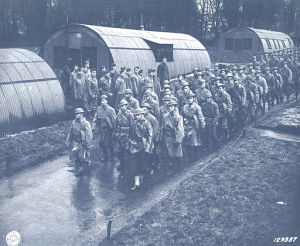
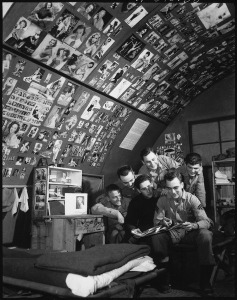
Finally Home
I don’t know how long the young family lived in Tin Can Alley, but in 1953 Mike received a Selective Service Notice forwarded from their last Michigan residence to a San Diego address (that I cannot pull up on Google Maps) then to 11579 Claymore, Whittier, Los Angeles County, California (this pulls up in Google Maps as a Santa Fe Springs address).
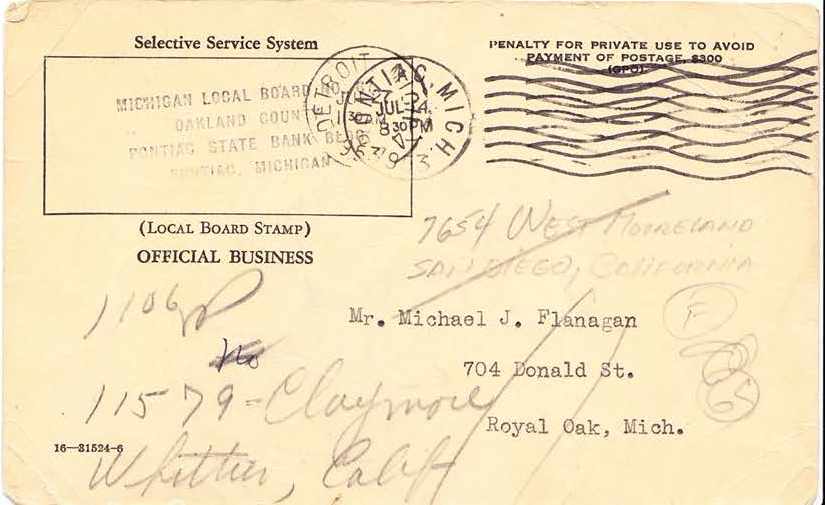
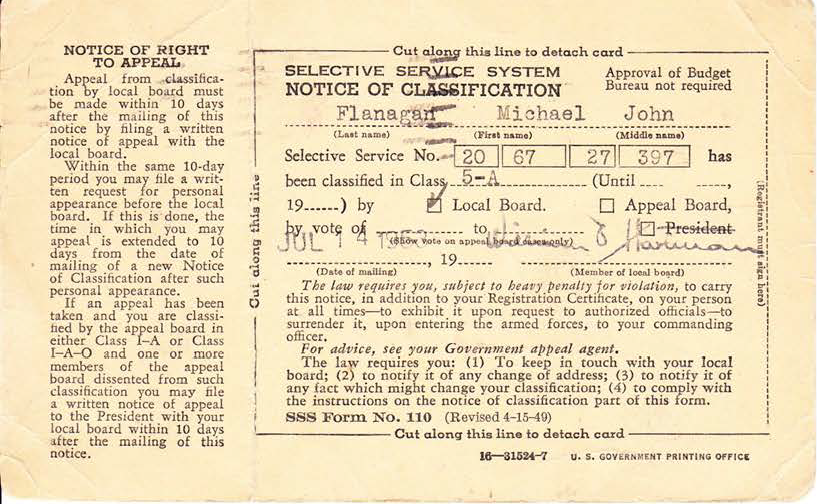
Mom does not remember them living at a Whittier address, or a Santa Fe Springs address other than the home they grew up in. This might have been the home of Elsie’s sister Cassie, which Grandpa and Grandma may have been using as a mailing address while they were living in San Diego or in Fullerton.
By 1956, Mike and Elsie had settled their family in to the first home they owned in California, the Santa Fe Springs home in which their children grew up. Mom says Grandma and Grandpa moved the family to Santa Fe Springs to be near Grandma’s sister Cassie and her family. This is the home I remember visiting and spending many nights in as a kid. And to me, this will always be my grandparents’ home.
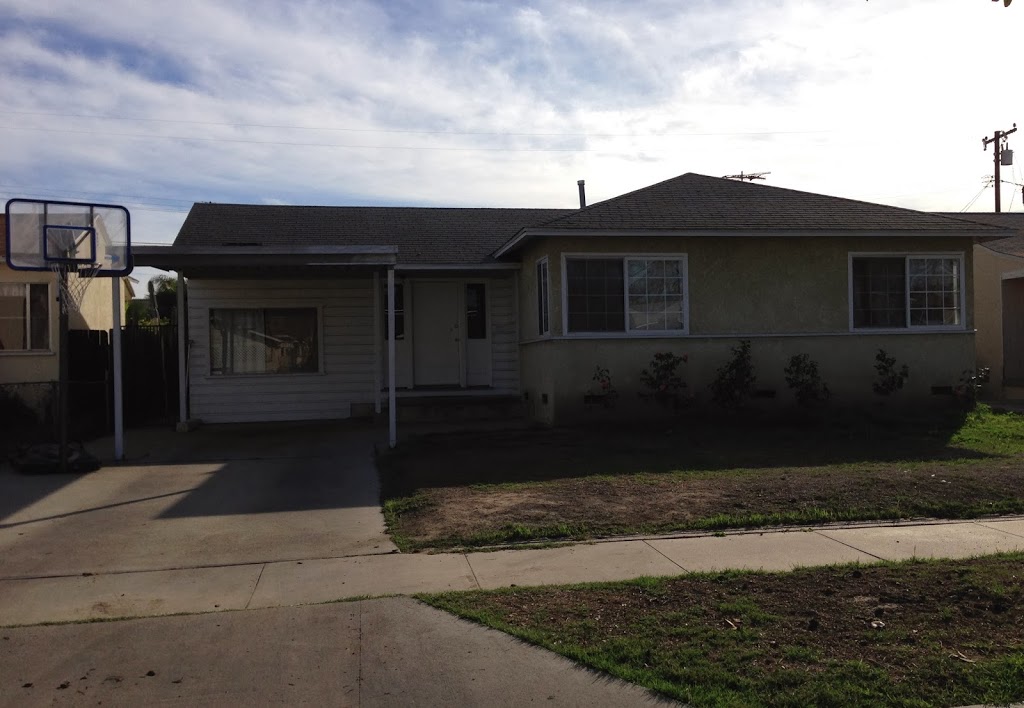
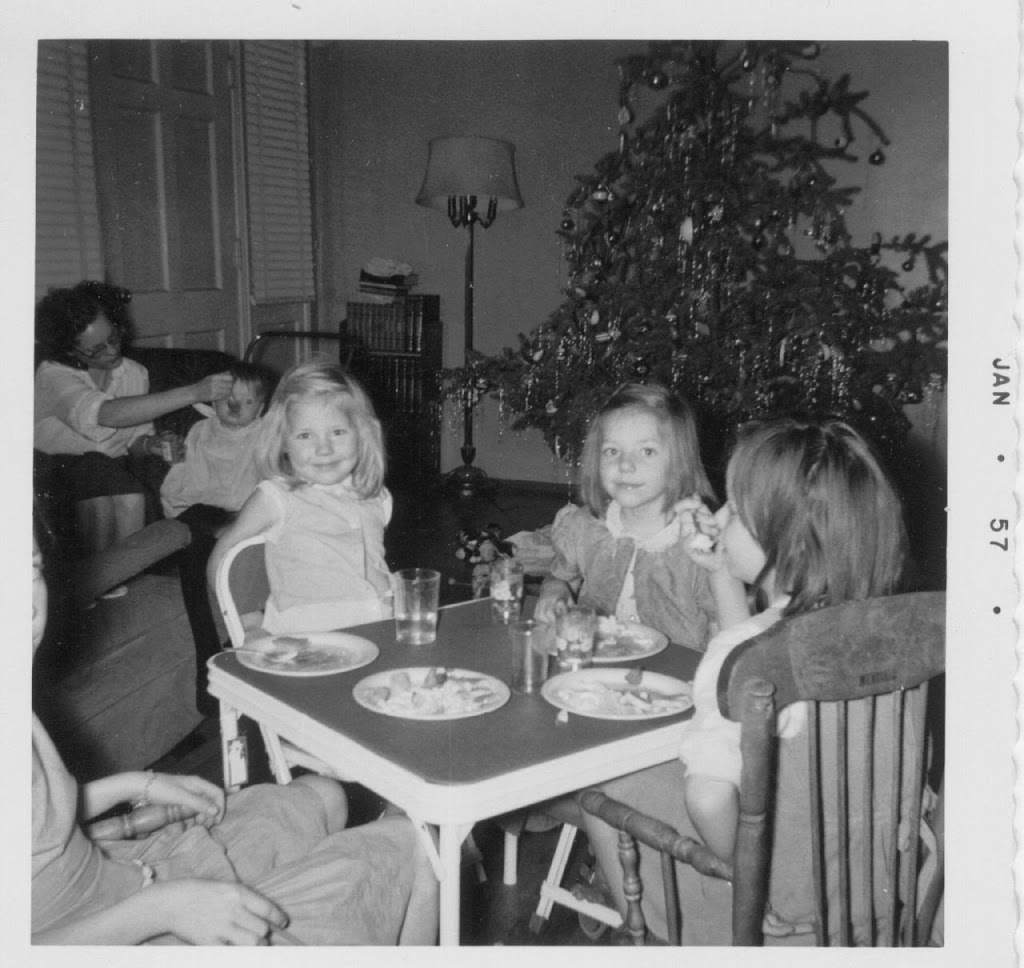
By Christmas 1956, the family was in their own home. Here you can see Grandma feeding baby Uncle Flanagan. The little blond girl smiling at the camera is Youngest Aunt Flanagan. Mom has her back to the camera. The family didn’t have much — they are eating at a card table with mismatched chairs, but the look happy.
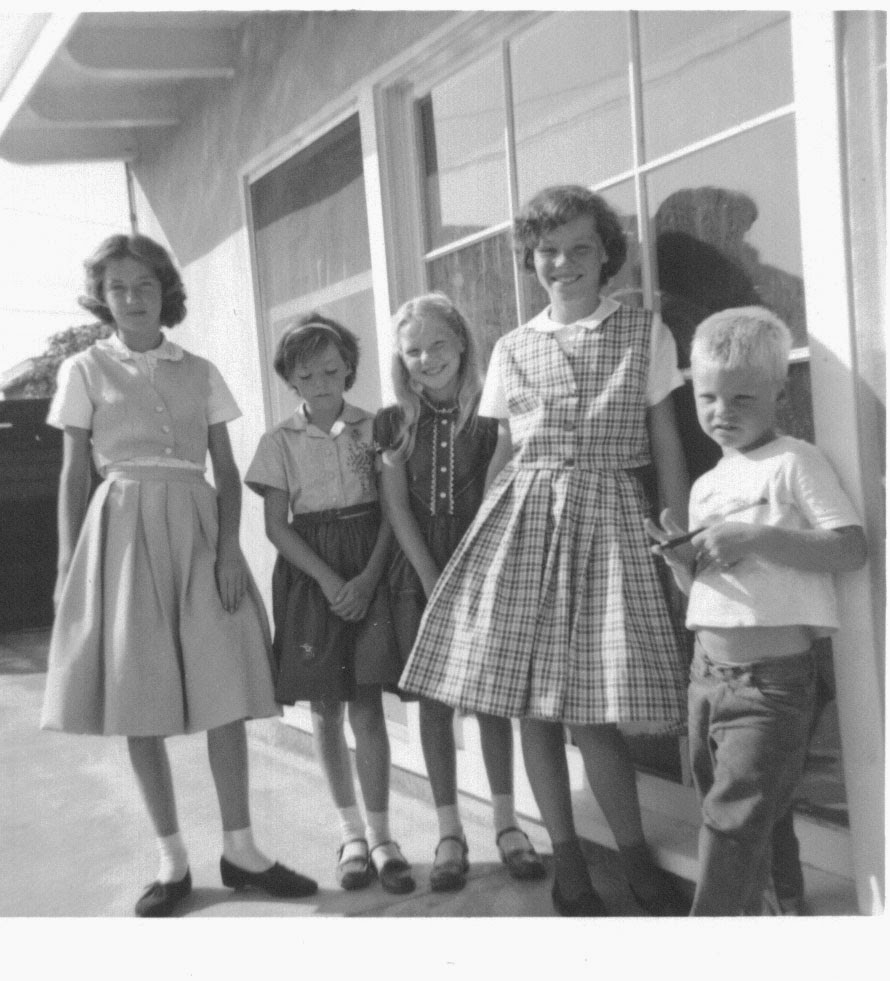
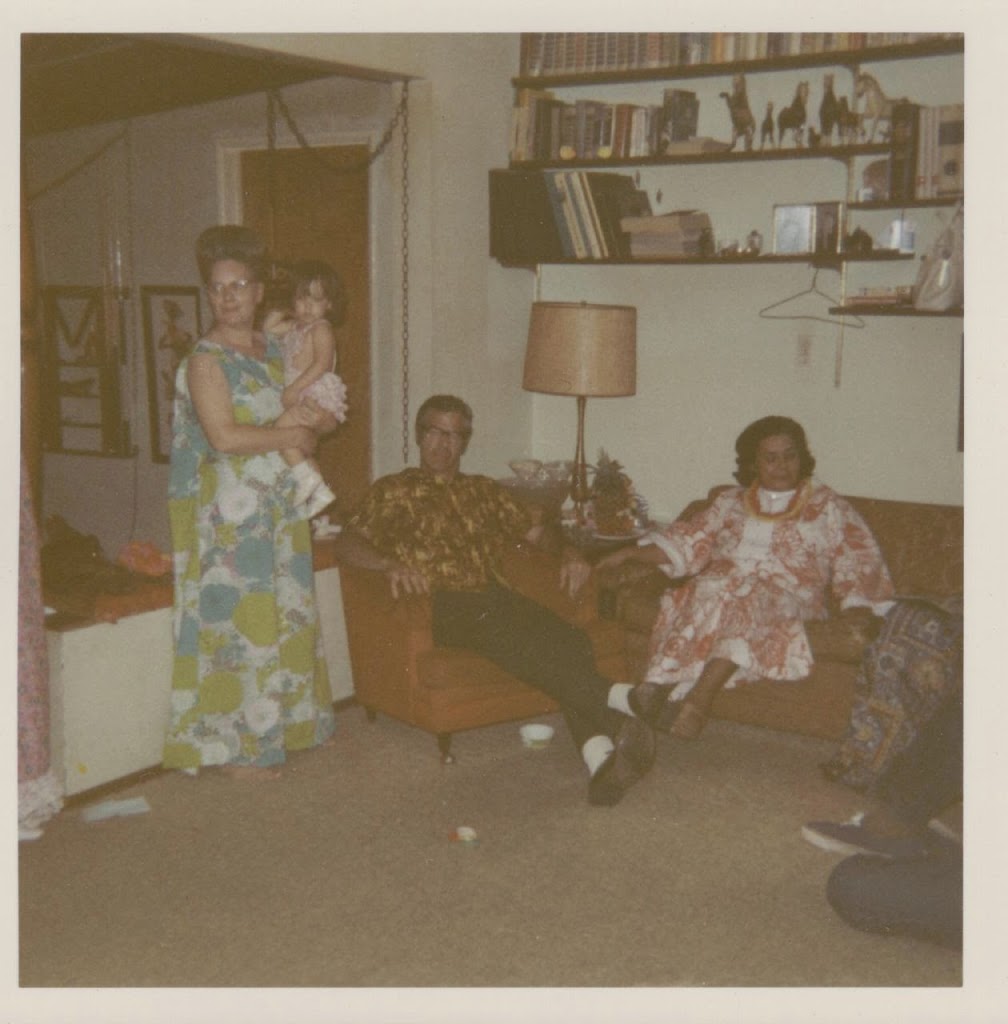
Me as a baby, being held by Grandma, in their Santa Fe Springs home. Grandpa is sitting next to my godmother, Aunt Bea. This was during a luau-style party for my grandparents’ wedding anniversary.
My grandparents sold this home and moved to San Bernardino, California, after their kids were all married and had spread across Southern California. This San Bernardino home was their very first brand NEW home, and boy was Grandma proud of that fact! This was the last home they would ever live in before dying.
[contentblock id=16 img=html.png]
[contentblock id=17 img=html.png]
